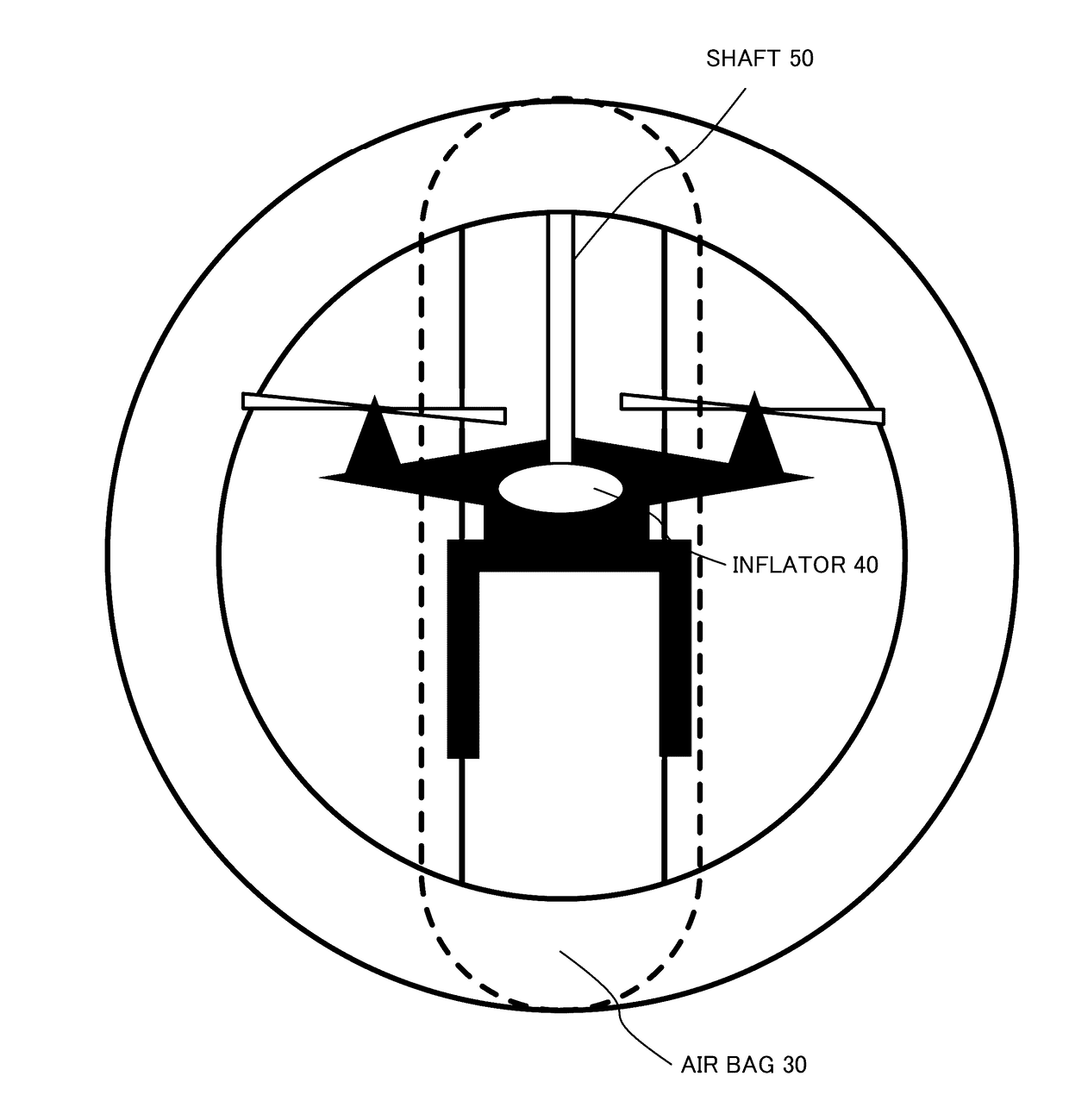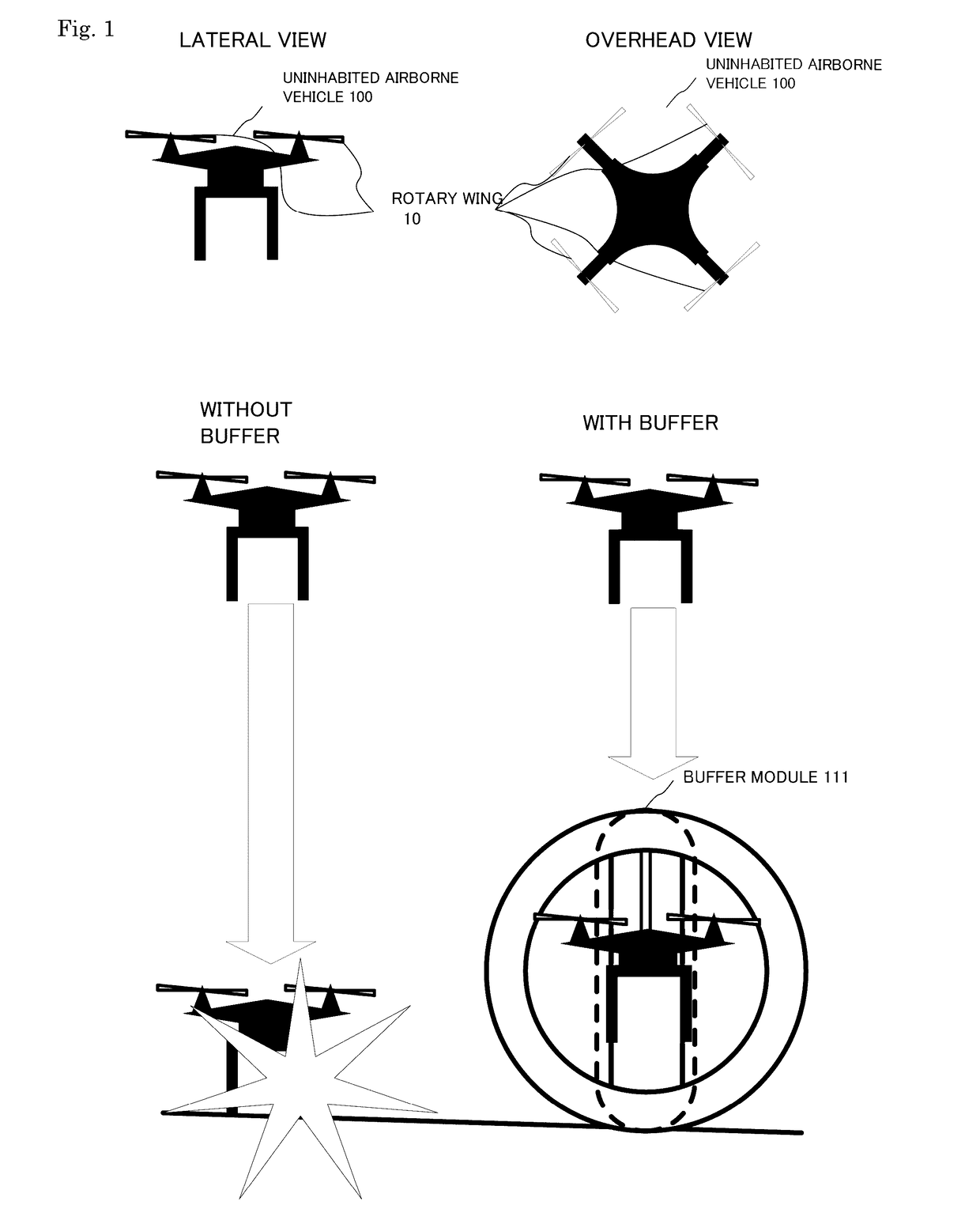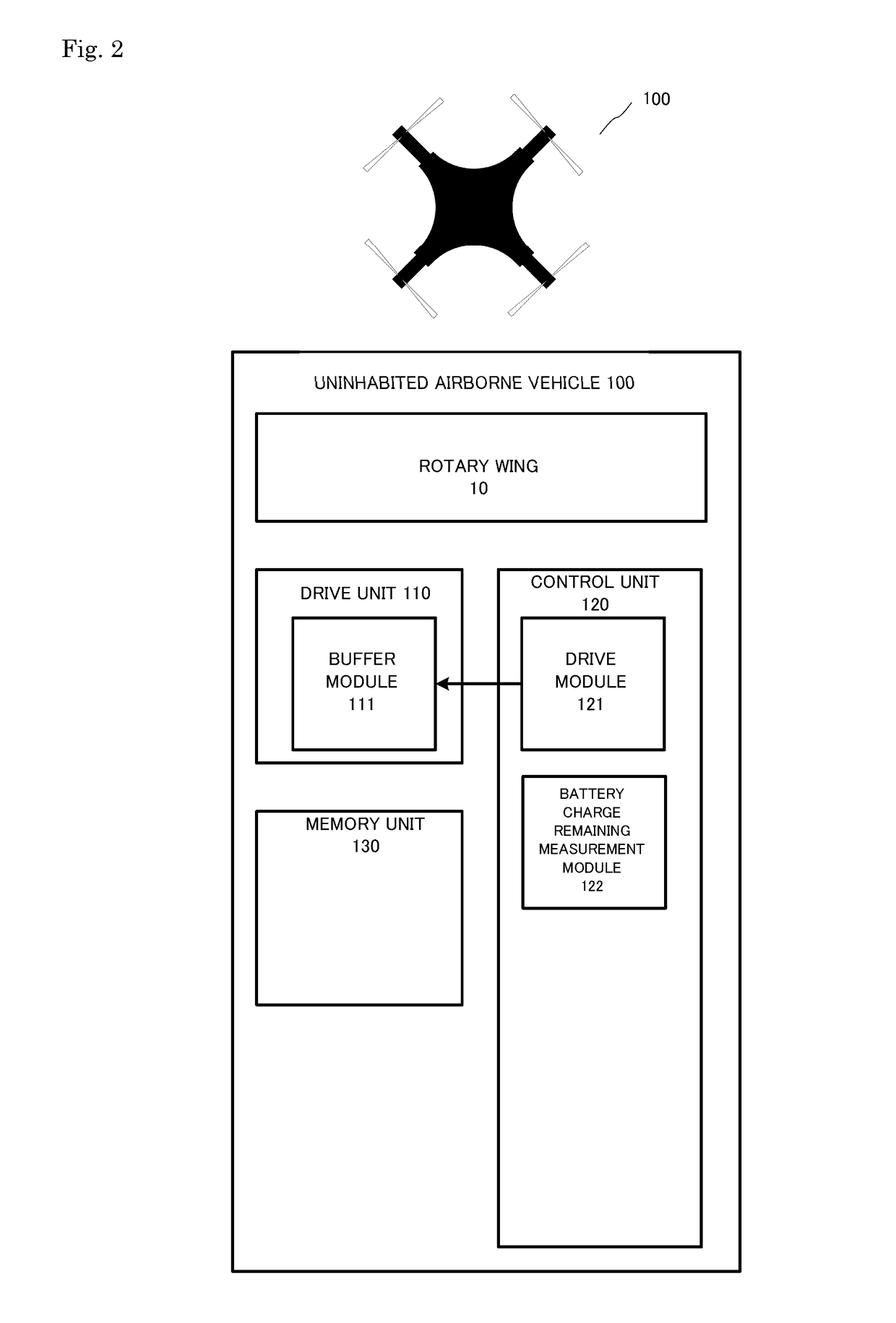Uninhabited airborne vehicle and method of controlling the same
a technology of airborne vehicles and airframes, applied in the field of uninhabited airborne vehicles, can solve the problems of not being able to produce an adequate effect of reducing the falling velocity, people and property damage, and not being able to prevent damage to the main body, so as to reduce the impact and reduce the impa
- Summary
- Abstract
- Description
- Claims
- Application Information
AI Technical Summary
Benefits of technology
Problems solved by technology
Method used
Image
Examples
Embodiment Construction
[0067]Embodiments of the present invention will be described below with reference to the attached drawings. However, this is illustrative only, and the technological scope of the present invention is not limited thereto.
Uninhabited Airborne Vehicle 100
[0068]FIG. 1 shows a schematic diagram of the uninhabited airborne vehicle 100 according to a preferable embodiment of the present invention. The overview of the present invention will be described below with reference to FIG. 1.
[0069]The uninhabited airborne vehicle 100 is an aircraft capable of unmanned flight, which includes a rotary wing 10, a drive unit 110, a control unit 120, and a memory unit 130 as shown in FIG. 2. The drive unit 110 includes a buffer module 111, and the control unit 120 includes a drive module 121 and a battery charge remaining measurement module 122.
[0070]Specifically, the buffer module 111 may be an air-bag system. Since the uninhabited airborne vehicle is often spinning when falling to the ground, the buff...
PUM
 Login to View More
Login to View More Abstract
Description
Claims
Application Information
 Login to View More
Login to View More - R&D
- Intellectual Property
- Life Sciences
- Materials
- Tech Scout
- Unparalleled Data Quality
- Higher Quality Content
- 60% Fewer Hallucinations
Browse by: Latest US Patents, China's latest patents, Technical Efficacy Thesaurus, Application Domain, Technology Topic, Popular Technical Reports.
© 2025 PatSnap. All rights reserved.Legal|Privacy policy|Modern Slavery Act Transparency Statement|Sitemap|About US| Contact US: help@patsnap.com



